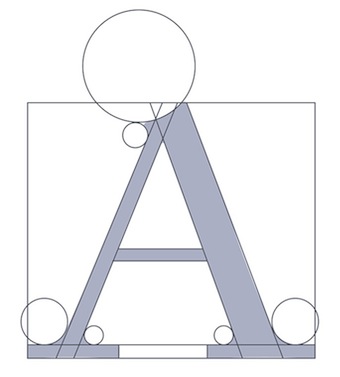TYPE DESIGN INFORMATION PAGE last updated on Fri Nov 14 13:14:06 EST 2025
FONT RECOGNITION VIA FONT MOOSE
|
|
|
|
Caslon: Wikipedia
Excerpts from the wiki page on Caslon: Caslon refers to a number of serif typefaces designed by William Caslon I (1692-1766), and various revivals thereof. Caslon shares the irregularity characteristic of Dutch Baroque types. It is characterized by short ascenders and descenders, bracketed serifs, moderately-high contrast, robust texture, and moderate modulation of stroke. The A has a concave hollow at the apex, the G is without a spur. Caslon's italics have a rhythmic calligraphic stoke. Characters A, V, and W have an acute slant. The lowercase italic p, q, v, w, and z all have a suggestion of a swash. [...] Caslon's earliest design dates to 1722. Caslon is cited as the first original typeface of English origin, but type historians like Stanley Morison and Alfred F. Johnson, a scientist who worked at the British Museum, did point out the close similarity of Caslon's design to the Dutch Fell types cut by Voskens and other type cut by the Dutchman Van Dyck. [...] Nicols writes: "he (Caslon) cut the beautiful fount of English which is used in printing Selden's Works 1726. Nicols describes this character as far superior over comtemporary Dutch founts used in English books at this period. Rowe More does not give any comment on this. Dutch founts were in use by several printers in England at that time. The Oxford University Press used the "Fell-types", character cut by the Dutch typefounder Voskens. The Cambridge University Press had received in January 1698 some 52 series of alphabets from Holland, all cut by Van Dyck. But even before that in 1697 thay used the Text-sized roman and italic of Van Dyck in an edition of Gratulatio Cantabrigiences. Character of Van Dyck and Voskens is found also in: William Harison, Woodstock Park, Tonson, 1706. Although Nicols attributes this character to Caslon, the fount used in Seldens Works is actually cut by Van Dyck. The italic is identical to the Van Dycks Augustijn Cursijf fount in specimen sheets issued in 1681 by the widow Daniel Elzevir. This woman had bought the type foundry of Van Dyck after Van Dyck died. The roman in this book, is a Garamond. This fount is used in the first volume and in the greater part of the second volume, It is found in a specimen sheet of the Amsterdam printer Johannes Kannewet, in accompagny with Van Dyck's Augustijn Cursijf. The only thing known about this Kannewet is that he was a printer, not a typefounder. This specimen-sheet is preserved in the Bagford-collection in the British Museum, and can be dated 1715 or earlier because Bagford died in 1716. There is no reason to suppose anything is added on a later date to this collection. The roman is named: Groote Mediaan Romyn. This fount is also found on a specimen sheet of the widow of Voskens. Therefore it can be assumed to be the work of Voskens. The earliest use of it at Amsterdam is 1684. The earliest use of a roman and italic cut by Caslon can be identified in books printed William Bowyer in 1725, 1726 and 1730. The founts cut by Caslon and his son, were close copies of the Dutch Old typeface cut by Van Dyck. These founts were rather fasionable at that time. The alternative founts they cut for text were a smaller, rather than a condensed letter. The Caslon types were distributed throughout the British Empire, including British North America. Much of the decayed appearance of early American printing is thought to be due to oxidation caused by long exposure to seawater during transport from England to the Americas. Caslon's types were immediately successful and used in many historic documents, including the U.S. Declaration of Independence. After William Caslon I's death, the use of his types diminished, but saw a revival between 1840-1880 as a part of the British Arts and Crafts movement. The Caslon design is still widely used today. For many years a common rule of thumb of printers and typesetters was When in doubt, use Caslon. |
EXTERNAL LINKS |
| | |
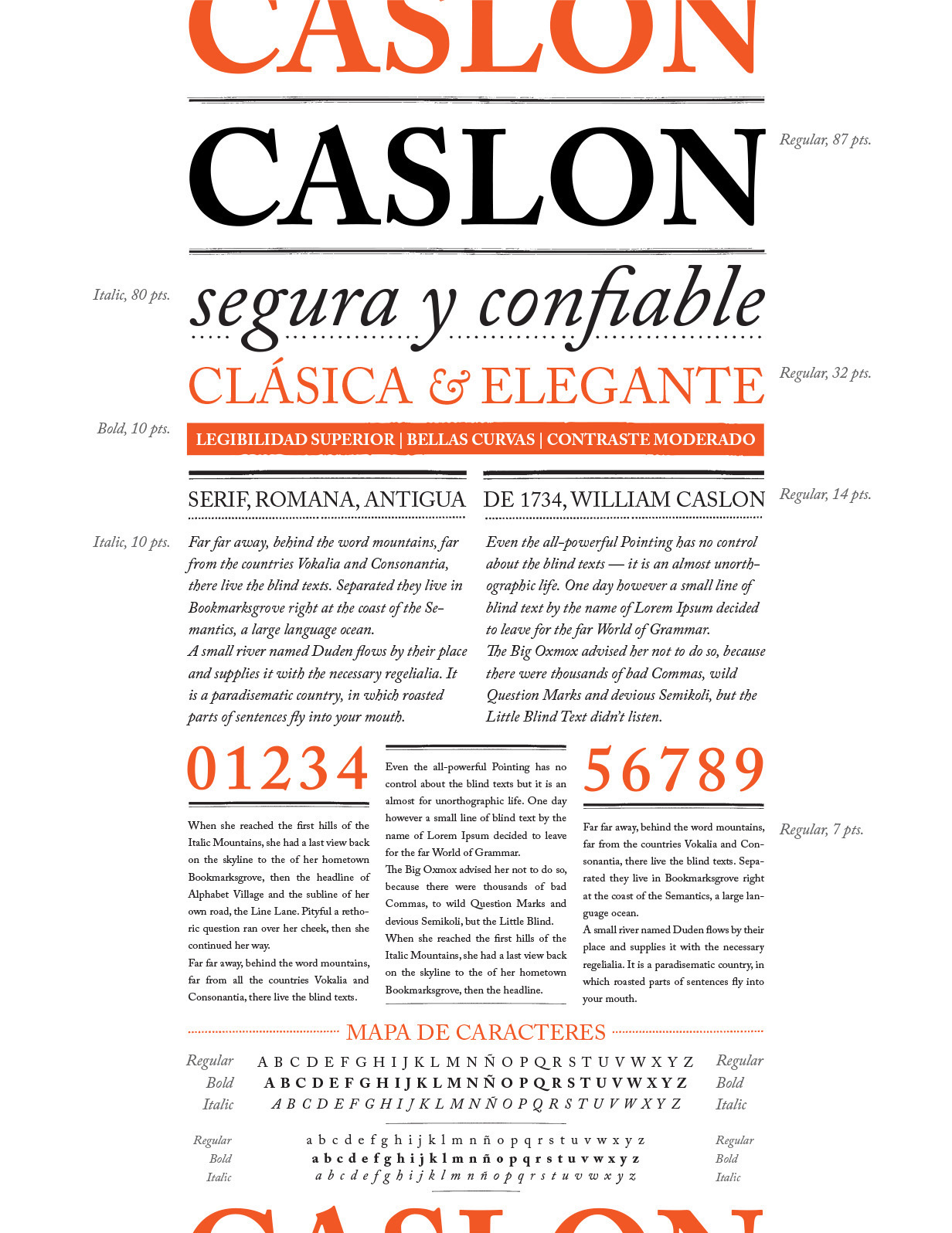
file name: Caslon Poster by Euge Digon 2015
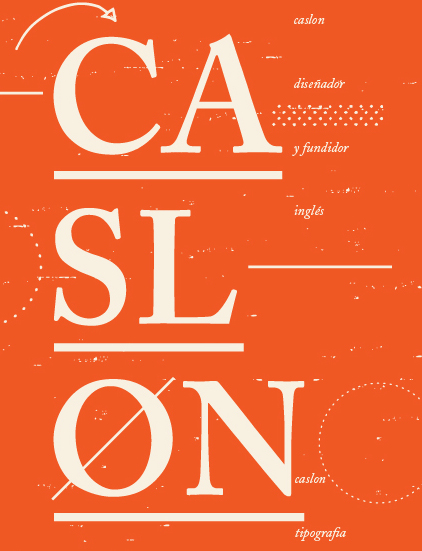
file name: Caslon Poster by Euge Digon 2015

file name: William Caslon Caslon 1725 Poster by Andrea Arques 2014
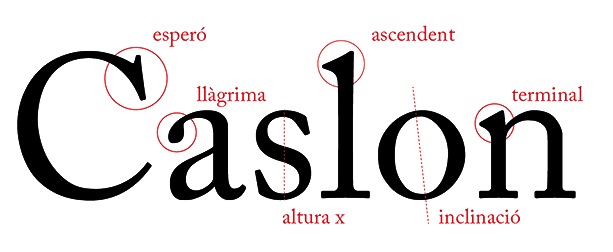
file name: William Caslon Caslon 1725 Poster by Andrea Arques 2014b
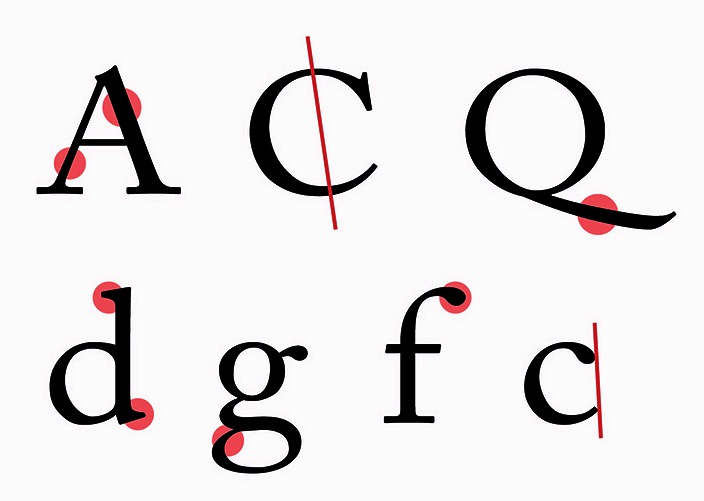
file name: William Caslon Caslon 1725 Poster by Andrea Arques 2014c
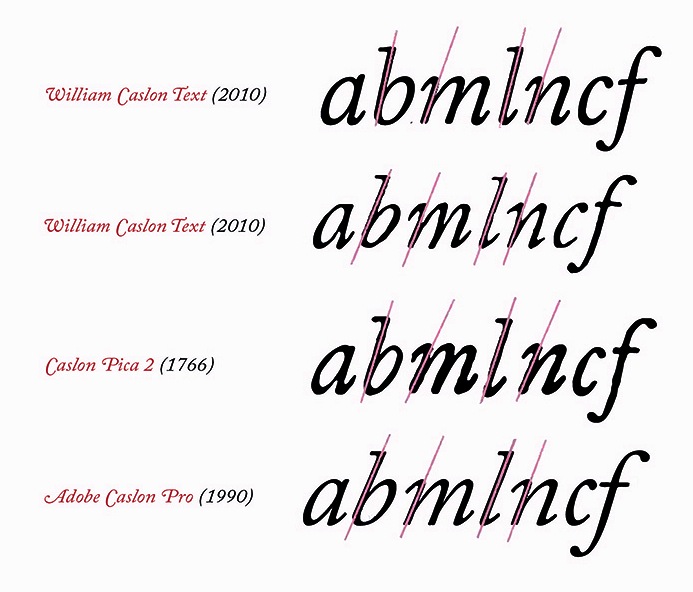
file name: William Caslon Caslon 1725 Poster by Andrea Arques 2014d
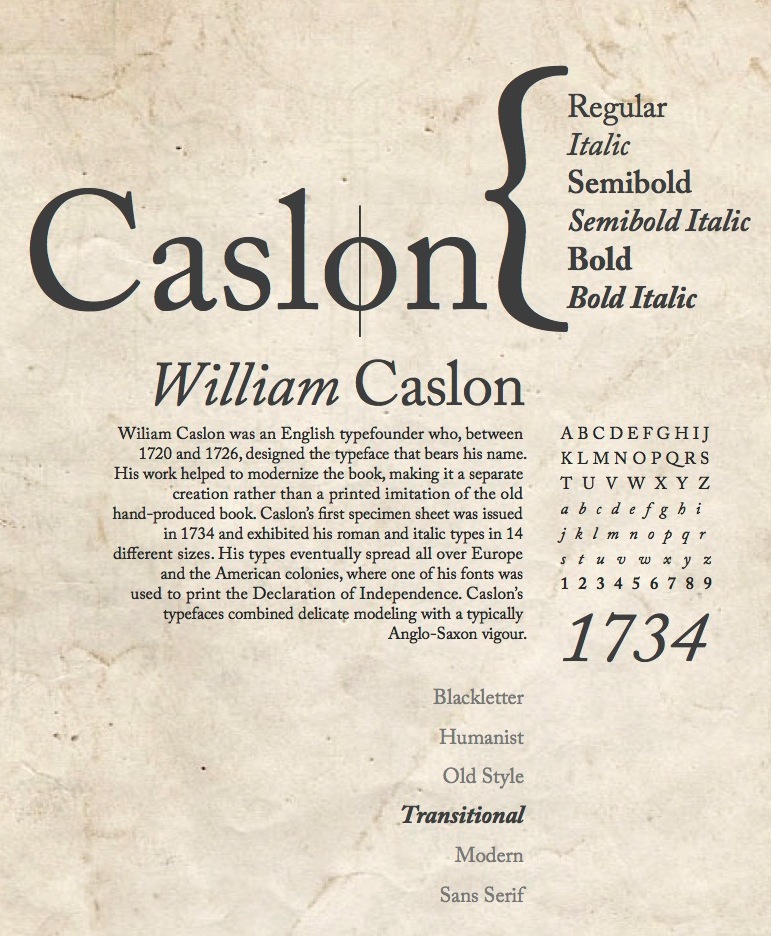
file name: William Caslon Caslon 1720 1726 Poster by Nichole Grieser 2014
| | |
|
Luc Devroye ⦿ School of Computer Science ⦿ McGill University Montreal, Canada H3A 2K6 ⦿ lucdevroye@gmail.com ⦿ https://luc.devroye.org ⦿ https://luc.devroye.org/fonts.html |

